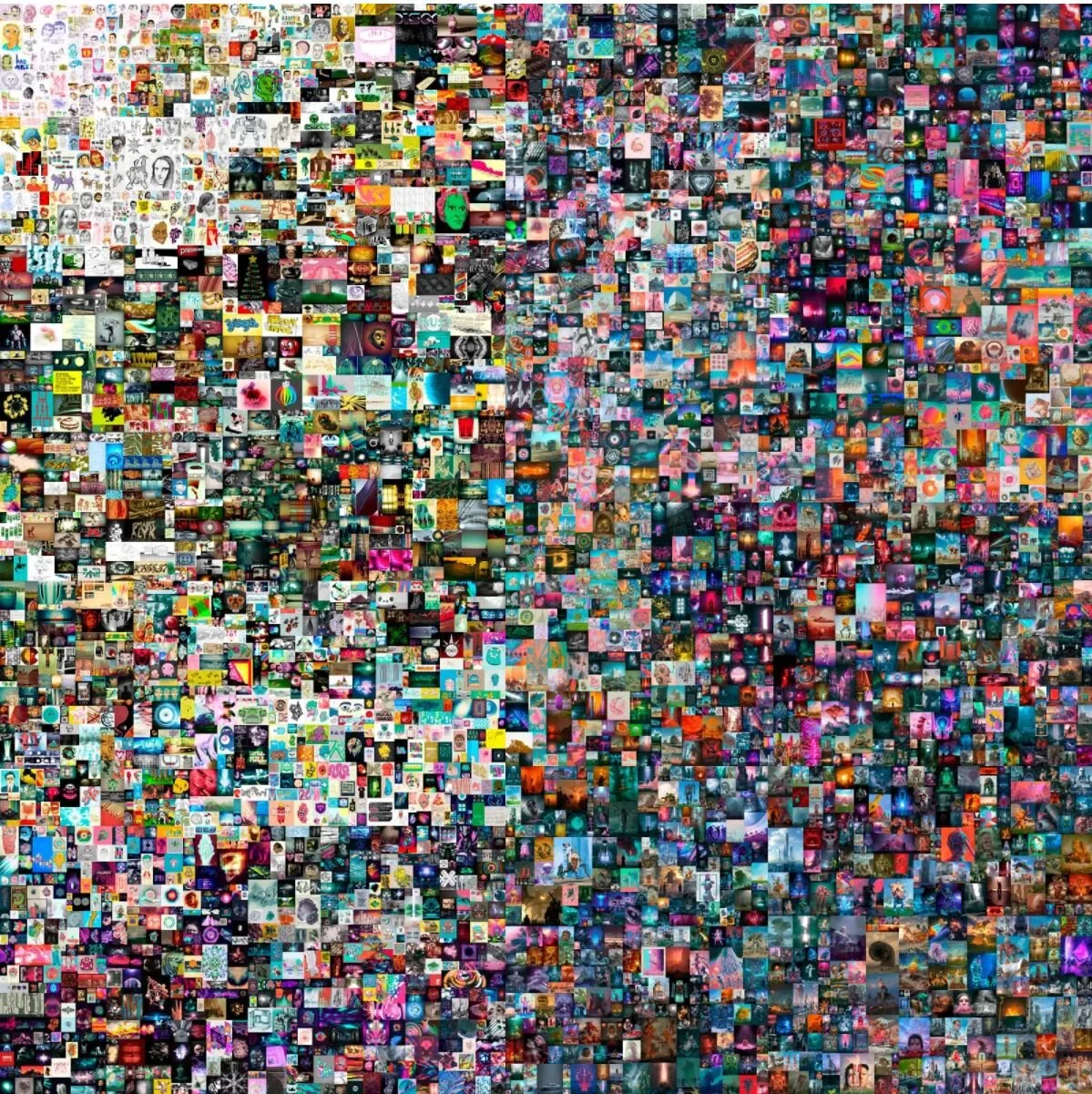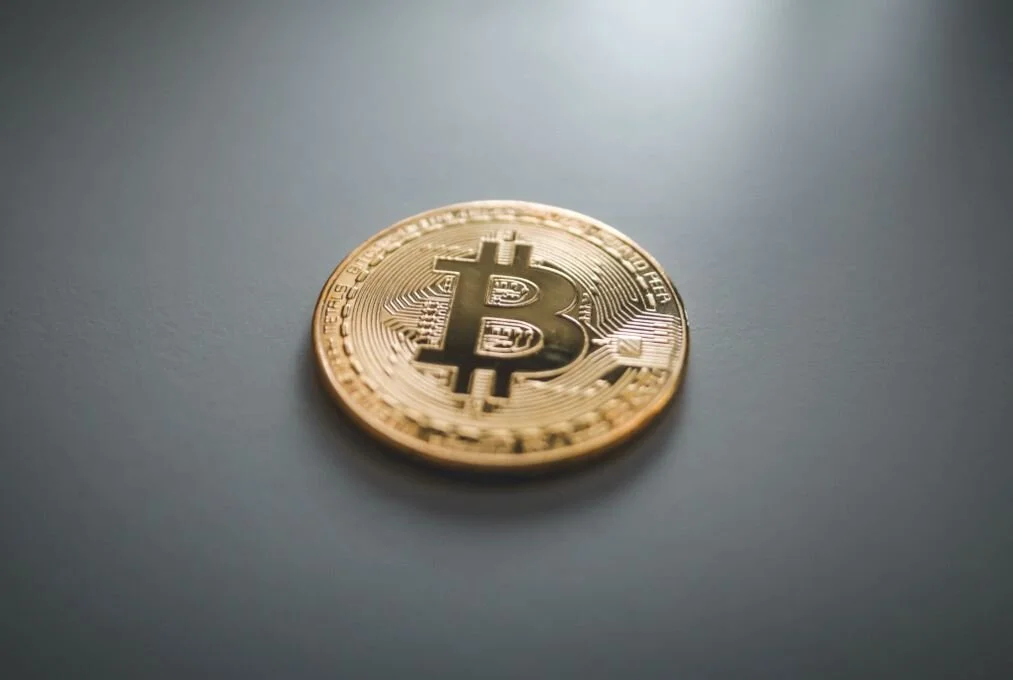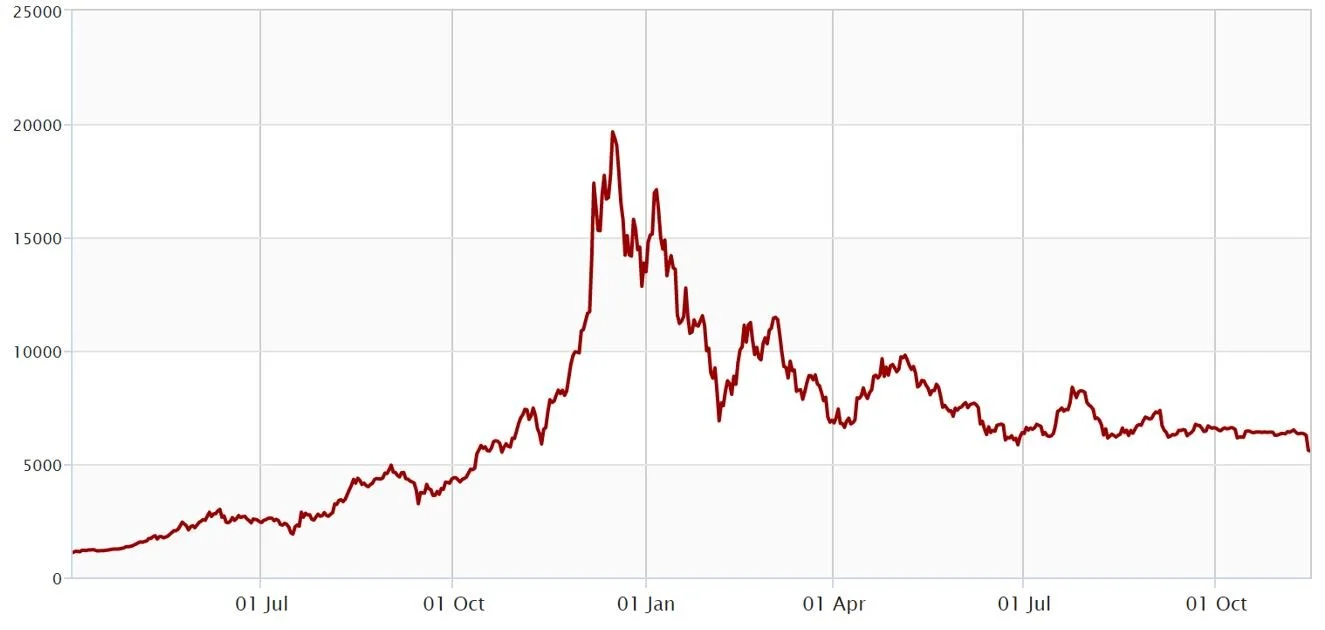I hope this finds you well.
With Easter behind us and the May bank holiday rapidly approaching, it appears we are at the stage in the year where we can start to proclaim; “I can’t believe how quickly this year is going!”. Weeks are flying by, but as the passing of time continues to lead towards further easing of lockdown restrictions, we’re not complaining. Whilst we weren’t among those queuing round the block at Primark, it’s great to see non-essential shops having re-opened, as well as outdoor eating and drinking resuming.
However, with weather in recent weeks having variated between 20°C sunshine and snow. This dramatic fluctuation of the weather provides a suitable, if not subtle, metaphor for the past few months of trading in digital art and Crypto-assets.
As your advisers, we are always keeping one eye on new developments in investing, so given that crypto-currencies and art have recently been making headlines, we thought you might appreciate some explanation, this week kindly provided by Ash.
Please note, the content of this newsletter is for your general information purposes only and does not constitute investment advice.
The $69m JPEG
A few weeks ago, Mike Winkelmann who works under the pseudonym ‘Beeple’ sold a piece of art for a record setting $69m at the famous auction house Christies. This is the third highest price ever paid for a living artist after Jeff Koons and David Hockney. The art (above) is titled “The First 5000 Days”.
Why is this important? There has always been very expensive art. The difference here is that this piece can’t be hung on the buyer’s wall (or anyone else’s for that matter). It is a JPEG, saved to a memory stick. There is no physical art. It’s a ‘Crypto-asset’. Let me explain…
The rise and fall of various Crypto-assets have been making the mainstream news and all over social media in recent times. There are now hundreds, if not thousands of types of crypto-assets. Here we will be looking at two types: currencies and art.
By far the most popular crypto-asset is cryptocurrency, with Bitcoin becoming synonymous with the whole asset class. But what exactly are they? Cryptocurrencies hold the promise of making it easier to transfer funds directly between two parties, without the need for a trusted third party such as a bank or credit card company. Breaking down the word ‘cryptocurrency’ is insightful. ‘Crypto’ means hidden or concealed, referring to the secure technology that these assets use to protect the assets and their owners. ‘Currency’ refers to its purpose and the reason it was designed in the first place; a type of electronic cash that can be adopted across the world.
However, cryptocurrencies are not physical and are not like the cash we are used to at all. They exist only electronically, and unlike most currencies in modern history, they are not backed by any physical asset. You may be aware that UK Government bank notes read “I promise to pay the bearer on demand the sum of £X”. These promises to pay were backed by the UK governments gold reserves, and later the governments themselves. Cryptocurrencies have no centralised government controlling them, and these assets in general are unregulated. This means that a cryptocurrencies value is derived solely from its scarcity. Here we encounter one of the biggest issues with any cryptocurrency…
Because there is no ability to control the rate of supply, a cryptocurrency’s value is determined by the markets demand for it. Unchecked, this can mean huge fluctuations in price over short periods of time. A good example of this was in late 2017 when the price of Bitcoin climbed as high as $19,000 before dropping to around $7,000 by April 2018, a fall of 63% in around 3 months. To put this in perspective, during the 2020 COVID fuelled market crash, at its worst the FTSE100 dropped 29%.
A quick google search for the current price of Bitcoin – incredibly - places it near the $60,000 mark following significant increases in recent months. It is difficult to tell how the next few months will unfold for Bitcoin and cryptocurrencies in general, but it would not be a surprise if we saw significant falls in short time frames.
As such, it is easy to make the argument that these assets do not operate in the way they were intended. By its definition a currency must be stable so that people can understand its value and its purchasing power, and clearly many of these cryptocurrencies are not a viable option for most investors.
For the truly brave speculator, asset classes that fluctuate wildly provide opportunities to take big risks for potentially big returns. As we have often commented before however, investing in this way creates binary outcomes; you win, or you lose… The term used by some economists and fund managers is that they represent ‘casino-style investing’.
Back to our artist Beeple –
“The First 5000 Days” is an example of a new form of art that is utilising the same technology as Bitcoin and other cryptocurrencies to create an NFT (or non-fungible tokens). NFTs are "one-of-a-kind" assets in the digital world that can be bought and sold like any other piece of property, but they have no tangible form of their own. Just like crypto-currencies there is no physical asset, in this instance the NFT acts as a certificate of ownership for this virtual asset.
To explain this further, a fungible asset is something that can be readily interchanged – traditionally like money. With cash, you can swap a £10 note for two £5 notes and it will have the same value. If an asset is non-fungible, it cannot be easily swapped for something else because it is unique. The asset could be anything distinctive, and this type of crypto-asset lends itself well to art.
For example, there is one real Mona Lisa painting currently hanging in the Louvre Museum, Paris. Anyone can go and take pictures of the painting, but there will always only be one original painting. But as highlighted in many great (and terrible) crime films, the Mona Lisa can be stolen and sold on the black market. In theory, Beeple’s art, by its design and use of crypto technology means that it cannot be stolen. There is real world application for the technology, especially considering the growth of digital art and online ownership rights. Whether you would want to part with huge sums of money for what is effectively a JPEG picture is another matter.
One of the most interesting parts of this story is what happened after Beeple sold his art. The $69m sum was transferred to him in the form of a crypto-currency. You may be asking yourself what is the first thing you would do upon receiving such a lofty sum? He immediately transferred his new cryptocurrency wealth back into good old US Dollars which tells a story in itself…
By now you may be wondering what all this means for your investments, and the way we construct our portfolios. In short, not much. Our portfolios are professionally managed with the main objective of controlling risk. Crypto-assets are still in their infancy, and it is far too soon to even consider including them in our portfolios. We will leave the casino-style investing to the internet traders and hedge funds, but continue to review and monitor these and other new investments and the opportunities they may present.
Wetherall’s Client Survey – We Want Your Views!
Before I close, I’d just like to say a big thank you to those of you who have already completed our annual client survey. Some of you were exceptionally quick off the starting blocks, so we’ve already had lots of valuable feedback (and kind words) for which we’re grateful.
If you’re yet to complete the survey we would love to get your views and comments. The link is below and it should only take ten minutes to complete. It is also your chance to let us know if there are any charities that are important to you, as we’ll shortly be planning our next team challenge to raise money for good causes.
Click here to start the survey.
With that I’ll close by wishing you a pleasant weekend. If you’d like to discuss anything contained in this bulletin, please feel free to get in touch.
Kind regards,
Ashley Burrows-Brown Dip PFS
Financial Planner







